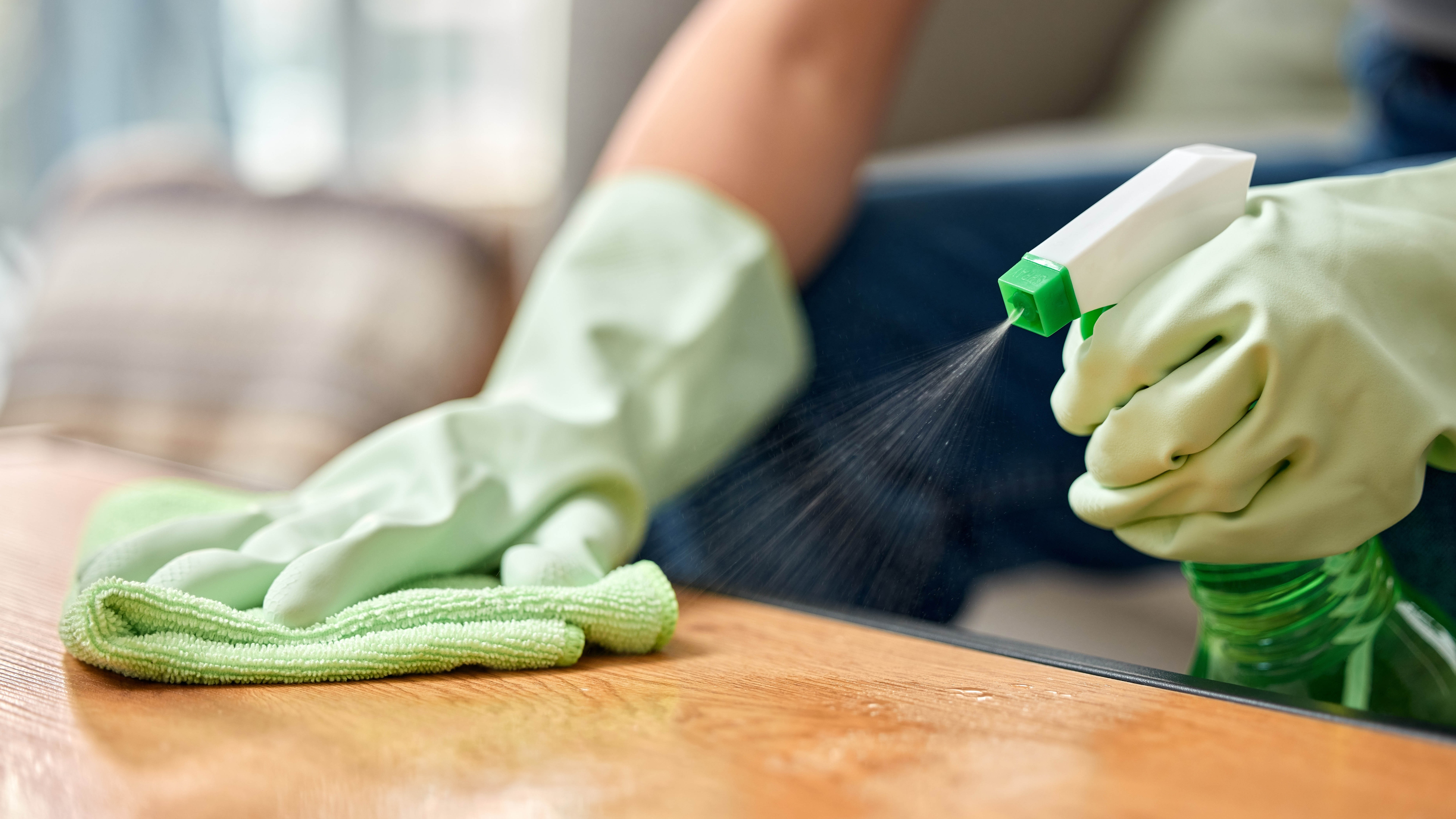
I thought I was being efficient. Grab the spray bottle, spritz everything in sight, wipe it down, done. For years, I cleaned my entire house this way, wondering why my cleaning supplies disappeared so quickly and why some surfaces never seemed truly clean despite my efforts.
Then I discovered I was making one of the most common cleaning mistakes. I learned that spraying directly onto surfaces isn’t just wasteful, it can actually damage your home and create health issues.
The solution was surprisingly simple, and it’s completely changed how I approach cleaning. Now my supplies last longer, my surfaces stay cleaner, and I don’t feel overwhelmed by chemical fumes every time I clean.
Plus, this technique works with almost every cleaning product you already own.
1. Stop spraying directly onto surfaces
The biggest mistake I was making was treating every cleaning spray like a garden hose. I would spray liberally across countertops, tables, and appliances without thinking about where all that product was going.
This direct spraying approach creates several problems. You end up using far more product than necessary, which means buying cleaning supplies more frequently. The excess product also builds up on surfaces over time, creating a film that attracts more dirt and makes cleaning harder in the long run.
More importantly, direct spraying can damage sensitive surfaces.
2. Spray onto your cleaning cloth instead
The game-changing technique is surprisingly simple. Instead of spraying the surface, spray your cleaning product onto a microfiber cloth first, then wipe the surface with the treated cloth.
This method gives you complete control over where the product goes and how much you use. You can target specific areas that need extra attention while avoiding oversaturating surfaces that only need light cleaning.
I noticed immediately that my cleaning supplies started lasting much longer. What used to be a quick spray across an entire countertop became a few targeted sprays onto my cloth, which was enough to clean the same area effectively.
3. Read labels for specific instructions
Not every cleaning product should be used this cloth-first method. Some products, particularly disinfectants and glass cleaners, are specifically formulated to be sprayed directly onto surfaces.
Disinfectants often need to sit on surfaces for a specific amount of time to kill germs effectively. Glass cleaners are typically designed to be sprayed directly and then wiped away. These products will clearly state on their labels if direct application is necessary.
I started checking every product label before using it, which helped me understand which cleaners needed direct application and which worked better with the cloth method.
When in doubt, the cloth method is usually safer for both your surfaces and your health.
4. Improve ventilation to reduce fumes
Even with better application techniques, cleaning product fumes can still be overwhelming, especially in small spaces like bathrooms or kitchens with poor air circulation.
I started opening windows and turning on exhaust fans before I begin cleaning, which makes a noticeable difference in air quality. This simple step reduces eye irritation and makes the cleaning process more comfortable overall.
The cloth method also helps reduce airborne particles since you’re not creating a mist of cleaning product in the air.
5. Use the right amount for each surface
One of the biggest advantages of the cloth method is learning how much product different surfaces actually need. A light spray on your cloth is often enough for routine cleaning, while heavily soiled areas might need a bit more.
I discovered that most surfaces need far less cleaning product than I was using before. A few sprays onto my microfiber cloth could clean an entire bathroom counter, whereas I previously would have sprayed the counter multiple times.
This realization prevents the buildup that was making my surfaces look dull over time. Now my countertops and appliances maintain their shine longer, and I spend less time cleaning overall.
Follow Tom’s Guide on Google News and add us as a preferred source to get our up-to-date news, analysis, and reviews in your feeds. Make sure to click the Follow button!
More from Tom’s Guide



